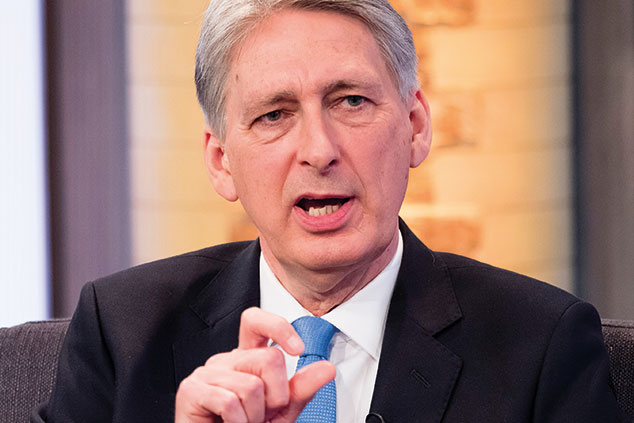
Our cash-strapped government is coming after shareholders with higher dividend taxes, but investment Isas are still tax-free.
In this week’s special Isa issue
● Making the most of the seven ages of investment
● The best Isa deals for your cash
● Duck the dividend tax with share Isas
● IF Isas: a bold way to build your capital
● Take advantage of pension tax breaks with a Sipp
● Learn from the first Isa millionaire
● Tax breaks for early-stage investors with VCTs
● Online Isa & Sipp providers cost comparison table
● Innovative Finance Isas comparison table
If you haven’t used up all of your 2017/2018 Isa allowance yet, you may want to move fast to get any dividend-paying investments that you hold outside a tax wrapper into an Isa before the tax year ends.
That’s because in April the dividend allowance – how much you can receive in dividends before you have to start paying tax on them – is being cut from £5,000 to £2,000. So if you are receiving more than £2,000 in dividends and if your personal allowance – £11,850 in the 2018/2019 tax year – is already taken up by your other income, your tax bill will go up.
Chancellor Philip Hammond announced the cut to the allowance last March, just two years after his predecessor George Osborne introduced it. At the time, Osborne also increased the tax rates on dividends – to 7.5% for basic-rate taxpayers, 32.5% for higher-rate taxpayers and 38.1% for additional-rate taxpayers – but used the new allowance to claim that most people would be no worse off.
That now looks like a classic politician’s misdirection: the trend is clear and there’s a good chance that future chancellors will continue to increase taxes on dividends – equalising the dividend allowance with the personal savings allowance would be an obvious step. However, assets held in an Isa are currently free from any UK income tax or capital gains tax (CGT). While there’s always the possibility that the favourable treatment of Isas could change in future, it makes sense to get as many of your holdings as you can inside an investment Isa to take advantage of tax breaks while they last.
A flexible investment wrapper
An investment Isa is technically called a stocks and shares Isa, but that name is misleading – they can hold more than shares. Permitted investments include shares listed on major stock exchanges around the world; investment trusts; unit trusts and open-ended investment companies (Oeics); exchange traded funds (ETFs); corporate bonds and government bonds.
The exact range of investments available to you will depend on the stockbroker or fund supermarket that you use – some are far more comprehensive than others. We know from our surveys that MoneyWeek readers tend to value things such as customer service and access to a wide range of investments more than having the cheapest service, so our picks (see right) are chosen based on criteria like this – not just low fees.
Use your allowances
You can contribute up to £20,000 per year into an investment Isa, less anything you pay into your other Isas (so if you put £5,000 into cash, you can put £15,000 into investments). You can transfer freely between cash Isas and investment Isas (and back again), without affecting your allowance for the year – but remember that you need to carry out a formal Isa transfer rather than simply withdrawing the money and paying it back in again. Investment Isas can be flexible Isas, but relatively few of the big investment firms offer this option yet.
You can’t transfer assets held outside an Isa directly into the wrapper, but you can sell them, move the cash into the Isa and then buy them again (this is known as a “Bed and Isa”). Some brokers offer lower fees for trades where you transfer an investment into a regular dealing account with them, sell it and then buy it back in an Isa to encourage you to do this.
Be aware that any gains from selling investments you hold outside an Isa may incur CGT if your profits from sales in this tax year exceed £11,300 (£11,700 next year). If this applies to you, try to split sales between tax years. If you have a spouse with unused CGT allowance, consider gifting an investment to them so that they can sell it using their own CGT allowance to buy it back within their own Isa.
Seven of the best investment Isas
Good for… cheap funds
Cavendish Online is a discount broker that uses Fidelity’s fund platform, but with lower fees for most portfolios than if you went directly to Fidelity. Charges for an Isa are 0.25% of portfolio value per year for accounts under £200,000 and 0.2% above that. For larger portfolios, iWeb (owned by Halifax) has no custody fees, but charges £5 per fund trade.
Good for… top service
AJ Bell Youinvest offers a wide range of funds and UK and international shares. Buying and selling shares, investment trusts and ETFs costs up to £9.95 per trade, plus a custody fee of 0.25% per year, capped at £75 per quarter. Funds cost £1.50 and an annual custody fee of up to 0.25%, depending on portfolio size. Hargreaves Lansdown also offers excellent service, but typically works out a bit more expensive.
Good for… flexible Isas
Charles Stanley Direct, the Share Centre and IG are good alternatives to the above in many situations (although IG doesn’t offer funds). Unlike most brokers, all three offer flexible Isas.